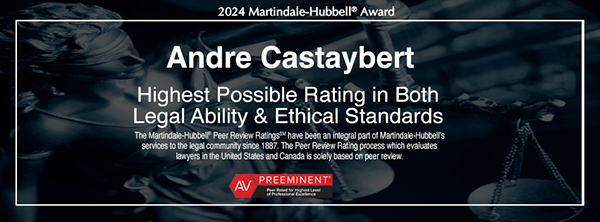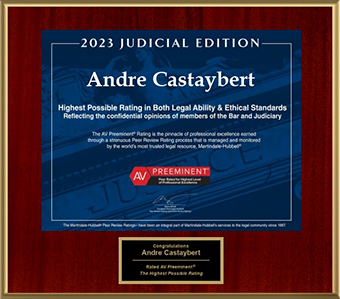Second Circuit Affirms Denial of D&O Coverage for NASDAQ Execution Failures
By Karen E. Clarke, Of Counsel
The litigation over insurance coverage for the claims arising from NASDAQ’s bungling of the Facebook IPO has resulted in a win for NASDAQ’s directors and officers (“D&O”) liability insurance carriers. In Beazley Insurance Co. v. ACE American Insurance Co., 880 F.3d 64 (2d Cir. 2018), the Second Circuit construed the “professional services” exclusion of NASDAQ’s D&O policy to affirm the district court’s denial of coverage for class action claims asserted by unhappy Facebook investors.
In 2012, NASDAQ encountered a series of technical difficulties in executing the Facebook IPO, resulting in orders not being properly processed and confirmed. Retail investors across the country sued NASDAQ and its officers, alleging that they suffered losses as a result of its technical failures, and those claims were all consolidated in the Southern District of New York and eventually settled for $26.5 million.
NASDAQ maintained both errors and omissions (“E&O”) and D&O insurance policies. Beazley Insurance Company, the second-level E&O carrier, paid out its policy limit of $15 million in E&O coverage and took assignment of NASDAQ’s contractual rights against the D&O carriers, ACE and National, which had disclaimed D&O coverage based on the “professional services” exclusion. Beazley sued ACE and National for D&O coverage. The District Court ruled the D&O carriers not liable, and the Second Circuit affirmed.
Construing the Exclusion
The parties disputed the applicability of the D&O policy’s “professional services” exclusion, which excluded liability for “Loss on account of any Claim … by or on behalf of a customer or client of the Company [NASDAQ], alleging, based upon, arising out of, or attributable to the rendering or failure to render professional services.” 880 F.3d at 68. This type of exclusion is common in D&O policies, based on the idea that a company’s professional services failures are intended to be covered by E&O insurance rather than D&O insurance.
The principal issue here was whether the retail investors qualified as “customers” or “clients” of NASDAQ, thus triggering the exclusion. These terms were not defined in the policy, so the court needed to look to custom and usage in the industry to construe them. Although the meaning of undefined policy terms would normally be determined based upon custom and usage under applicable (New York) state law, the Second Circuit observed that in certain paradigmatically federal fields, “a court may find a policy term unambiguous where that term has a clear meaning in federal law.” 880 F.3d at 69. Surveying the federal field of securities law, the Court concluded that “the vast majority of federal courts to consider the issue find retail investors to be ‘customers’ of a stock exchange.” Id.
Beazley argued that NASDAQ itself had clearly stated, in 2012, its view that only its member broker-dealers were its customers, not the retail investors who were customers of the broker-dealers. The Court was not persuaded by this evidence. For purposes of construing the policy language, the Court explained, what is relevant is that NASDAQ purchased the policy “against the backdrop of well-established federal securities law that unambiguously considers retail investors to be customers of the exchange.” 880 F.3d at 70. Further, the fact that retail investors are customers of NASDAQ’s member broker-dealers does not mean they are not also NASDAQ’s customers. Broker-dealers are simply agents of the retail investors in consummating trades, and the “investors may be customers both of NASDAQ and of NASDAQ’s members.” Id. at 70-71.
Beazley also argued that the federal securities claims asserted in the consolidated class action complaint were not “alleging, based upon, arising out of, or attributable to the rendering or failure to render professional services,” as they were federal securities fraud claims accusing NASDAQ and the two officer defendants of making misstatements and omissions in promotional materials regarding NASDAQ’s services, to induce Facebook to choose NASDAQ for its IPO. The crux of the complaint was that the defendants engaged in false and misleading advertising, and advertising is not the performance of professional services. 880 F.3d at 71-72.
The Second Circuit acknowledged that several decisions have indeed held that actions taken to promote a business are not “professional services,” but nonetheless rejected Beazley’s argument because “the [investors] could not win at trial merely by showing that NASDAQ made false and misleading statements as to its capabilities.” 880 F.3d at 72. To succeed on their securities fraud claims, the investors would have to demonstrate that the NASDAQ defendants’ deceptive conduct caused their claimed economic loss. The investors’ complaint, however, alleged that their losses resulted from NASDAQ’s failure to properly execute the purchase and sale orders and deliver timely confirmations, not from NASDAQ’s marketing of itself to Facebook as the best exchange for the IPO. Since the execution failures that caused the losses “go to the heart of NASDAQ’s provision of professional services,” the professional services exclusion applied and the D&O insurers were not liable. 880 F.3d at 73.
Conclusion
This decision underscores that the meaning of undefined terms in an insurance contract will be determined objectively, based upon industry custom and usage and pertinent legal decisions, and may not necessarily mirror the insured’s subjective beliefs. Companies need to be aware of the relevant judicial interpretations of policy terms both when they are obtaining insurance policies and when coverage disputes arise after a claim is made.
The attorneys at Castaybert PLLC can assist parties in handling such insurance coverage disputes when they arise.








